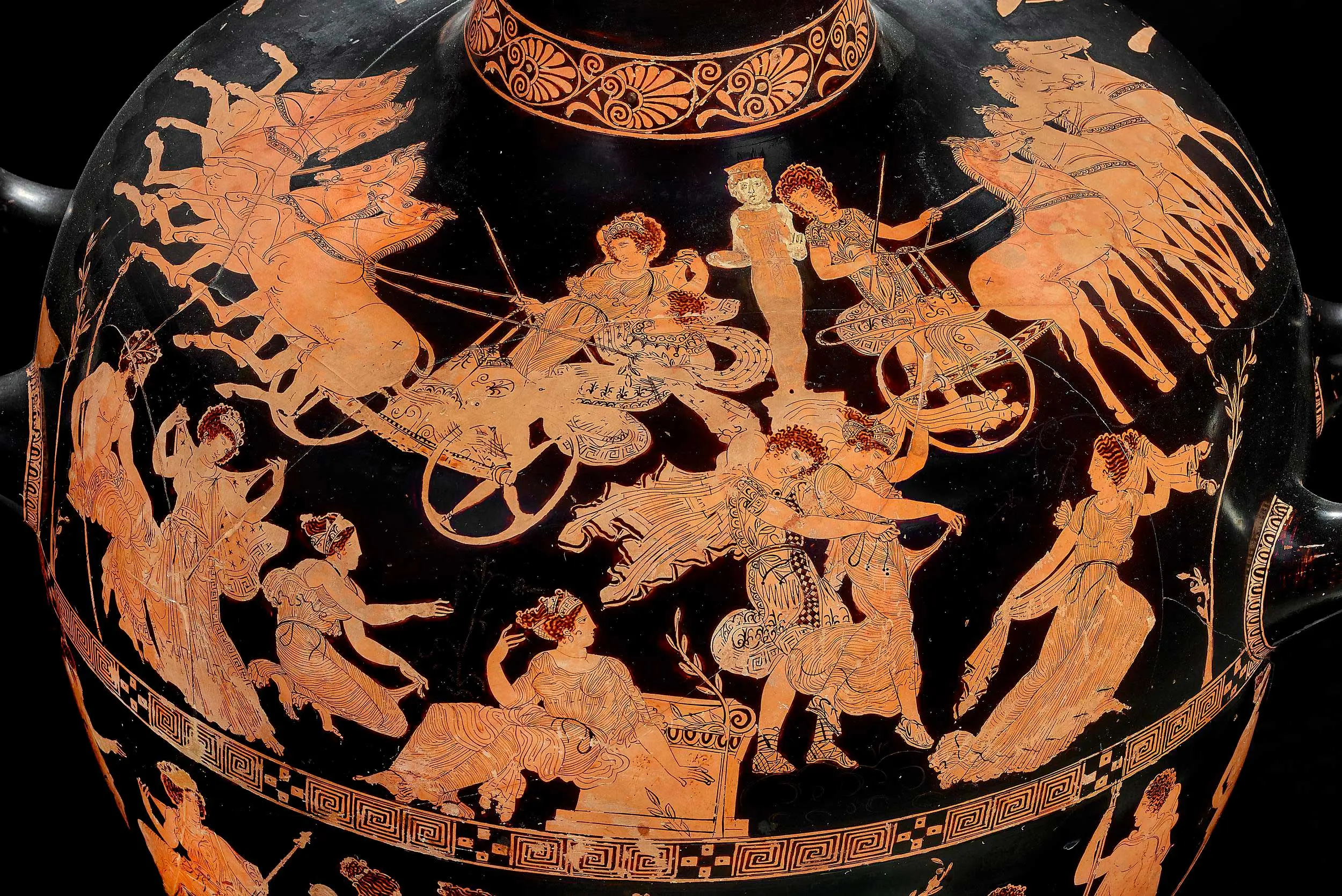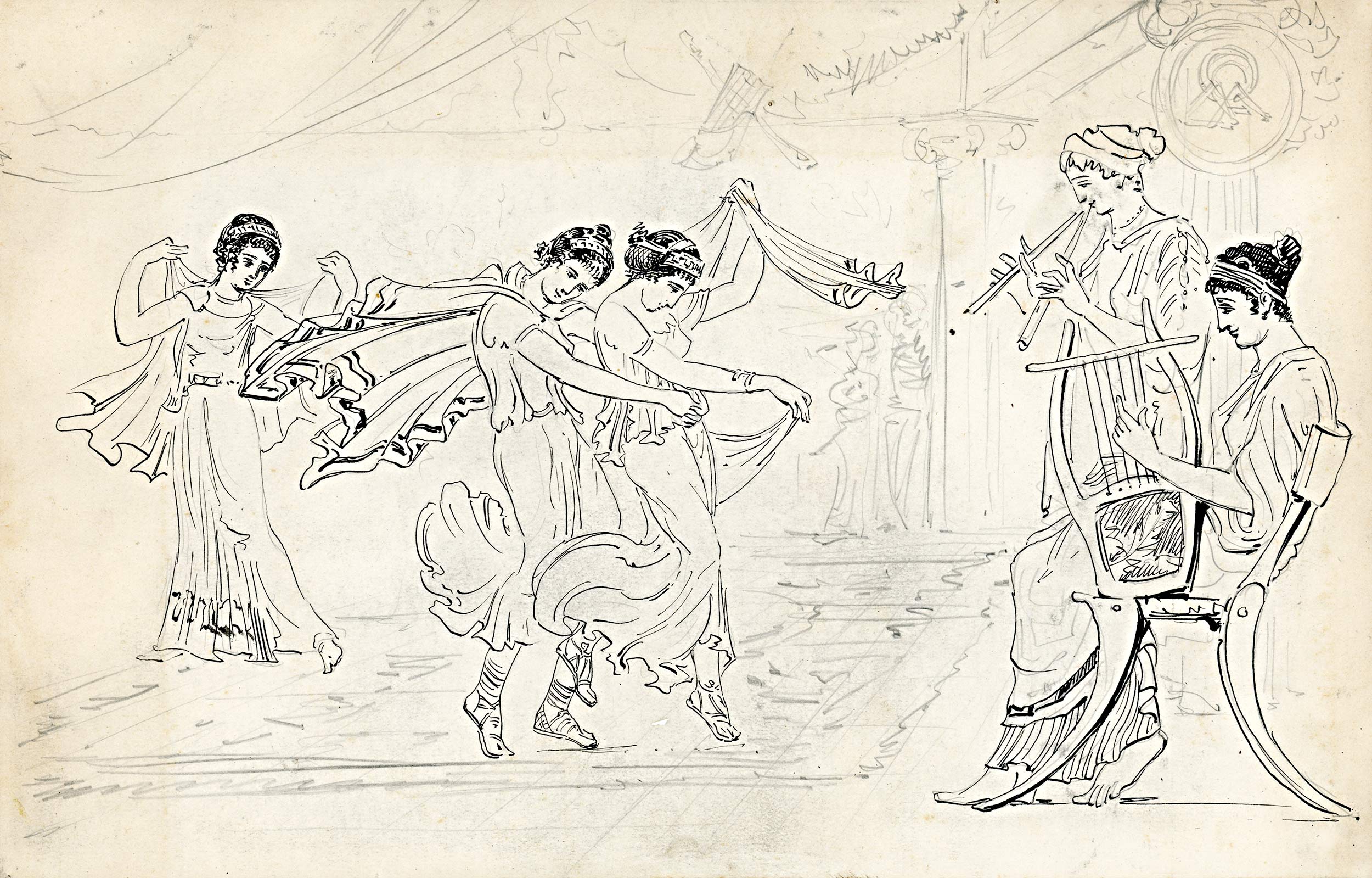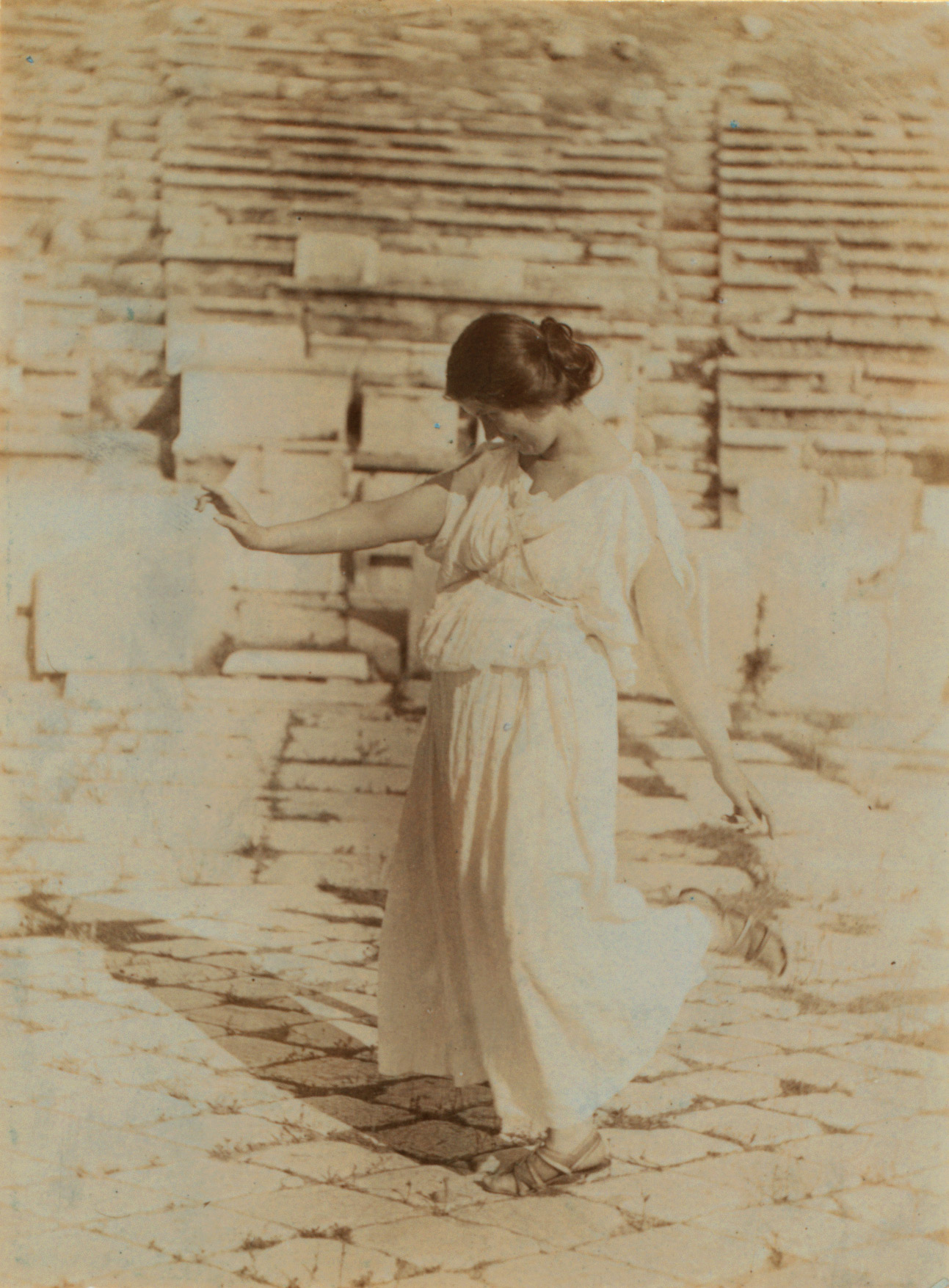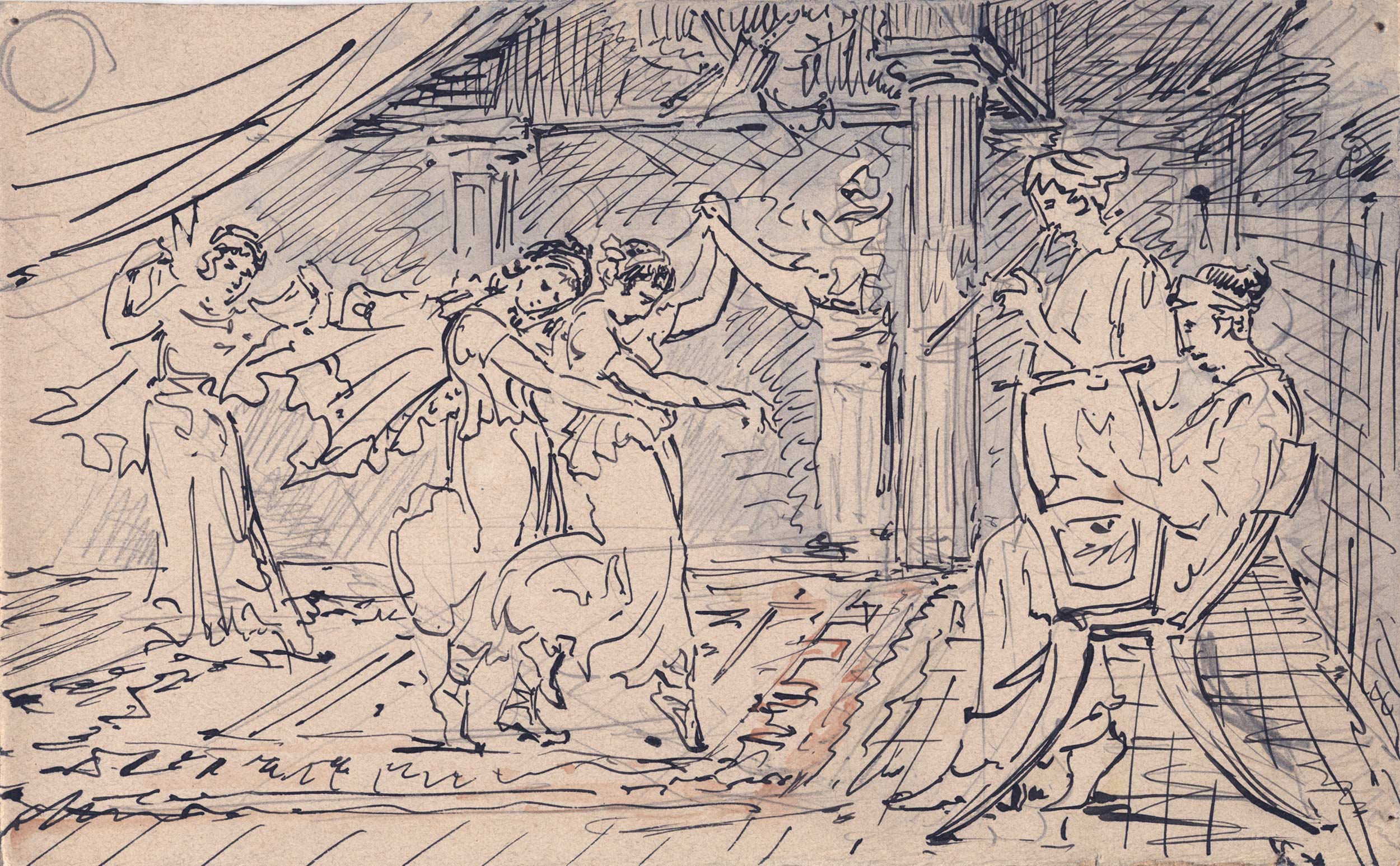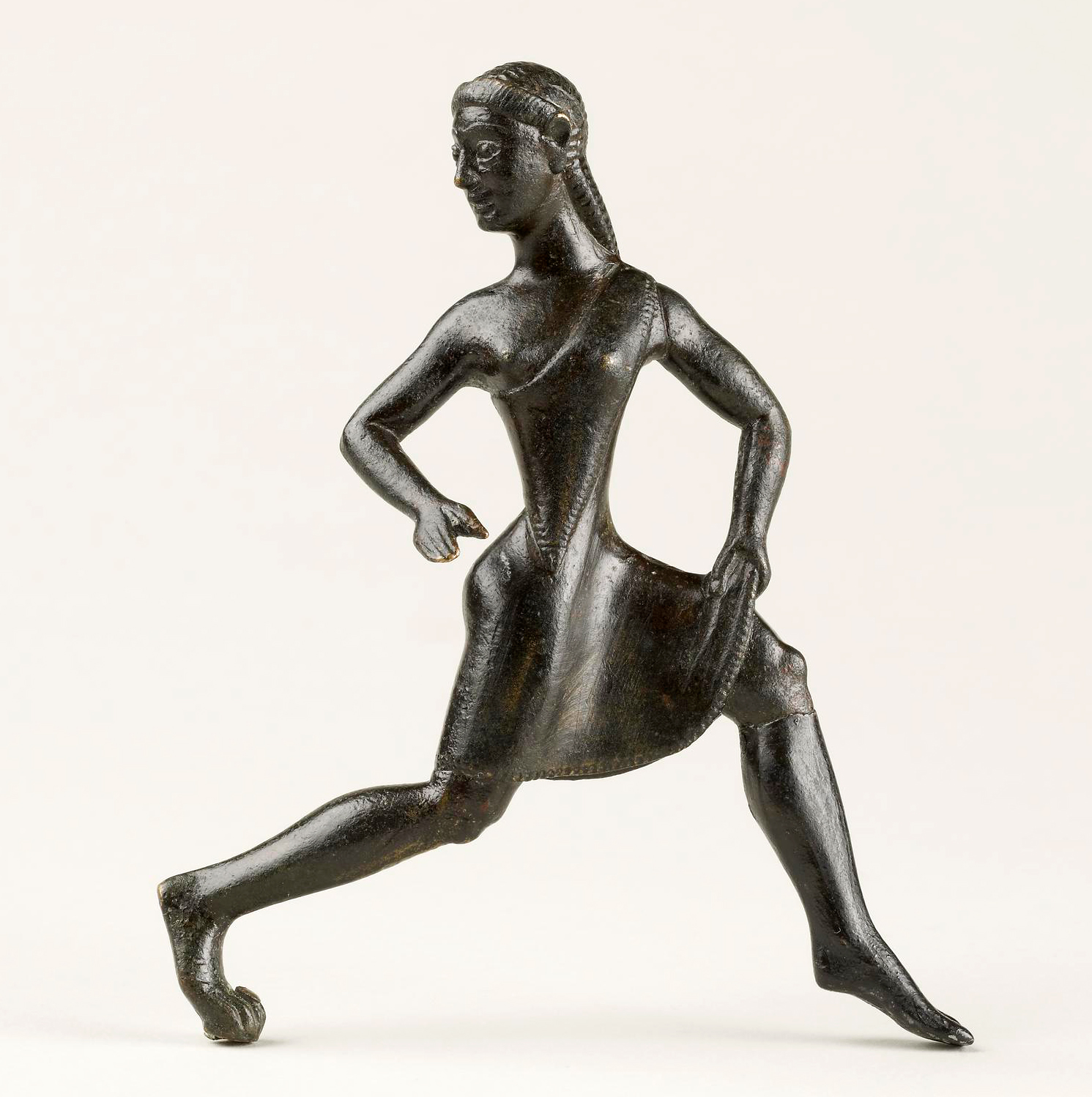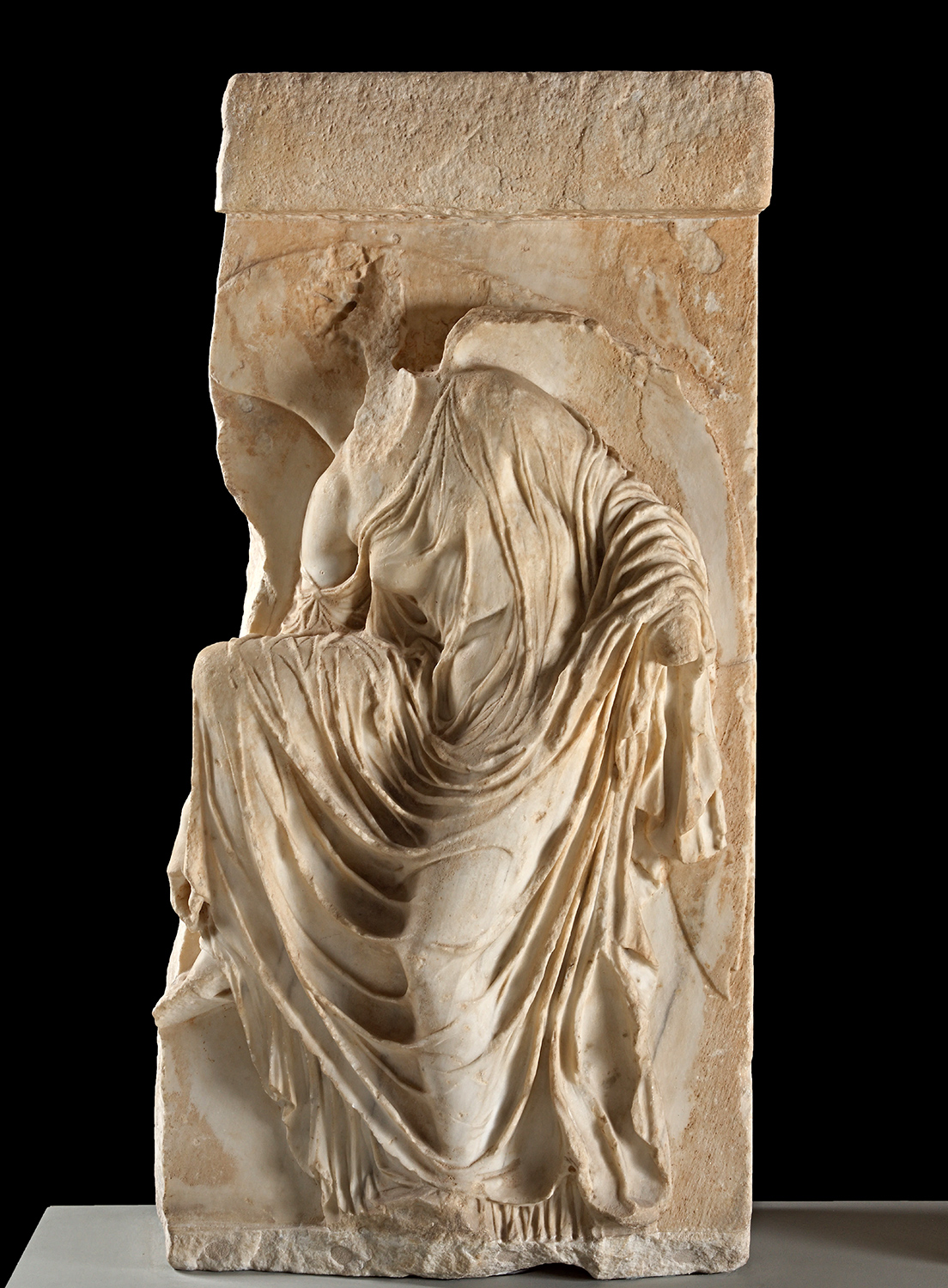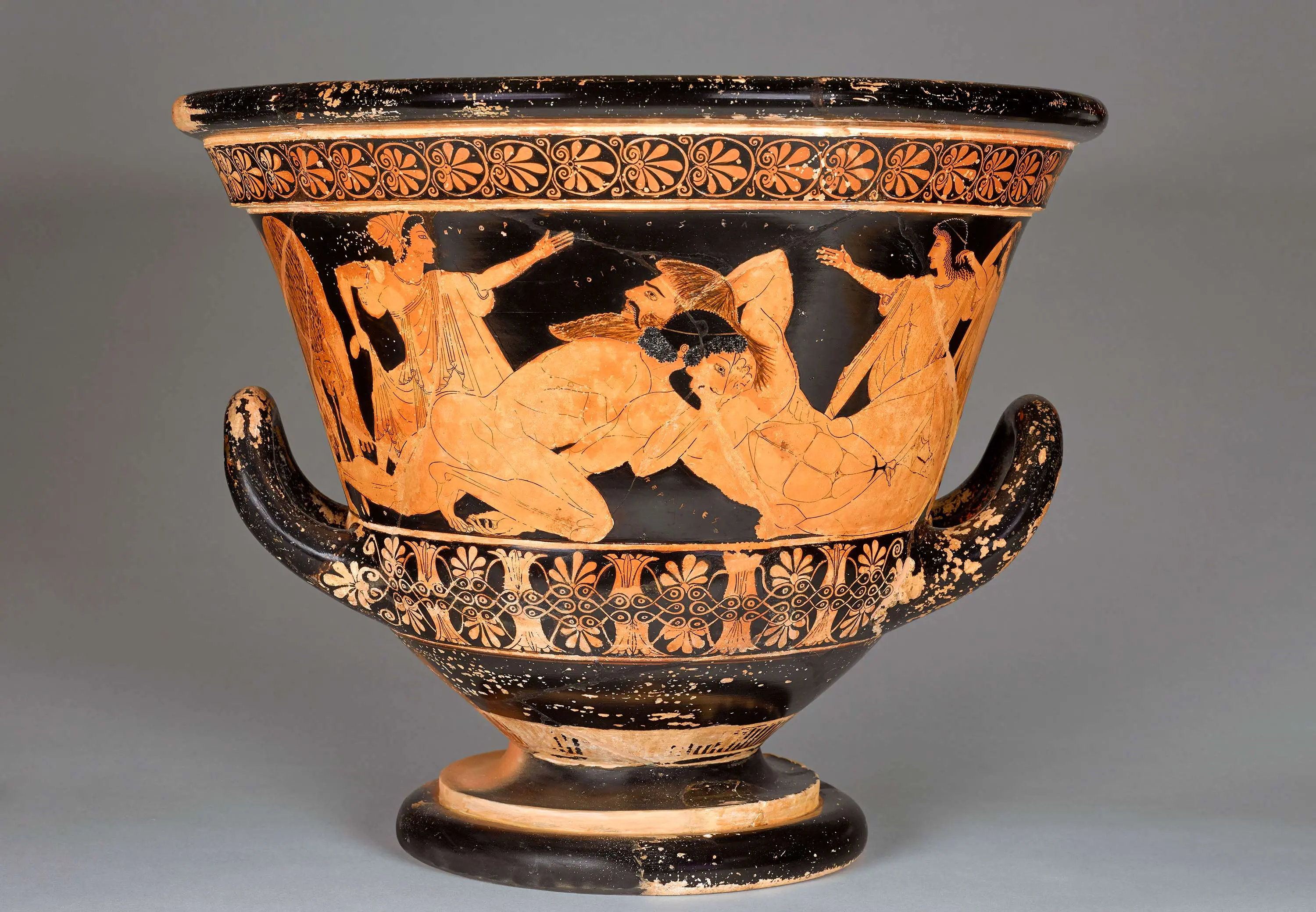
Olympism
24 April – 16 September 2024
From Mannered Grace to Liberated DanceSigned by the potter Meidias and attributed to the Meidias Painter
Red-figure Attic hydria, detail
420–410 BC
London, The British Museum, inv. 1772,0320.30+ (Vase E224)
A very graceful abduction
Characteristic of the so-called florid style of the late 5th century BC, the upper register of this hydria, produced in Athens and signed by the Meidias Painter, depicts the abduction of the daughters of Leukippos, king of Sparta, by the Dioskouroi, Kastor and Polydeukes. While Kastor carries off one of the young women in his chariot, Polydeukes has seized a second, who gracefully raises her veil. On the lower register, Zeus, his wife Hera and the goddess Athena calmly observe the scene, while Peitho (Persuasion) flees to the right, perhaps ashamed of having incited the gods to permit this outrage. As the act of unveiling indicates, this is in fact a marriage scene, marked by the sophistication of the clothing, the refinement of the hairstyles and the mannered postures accentuating femininity.
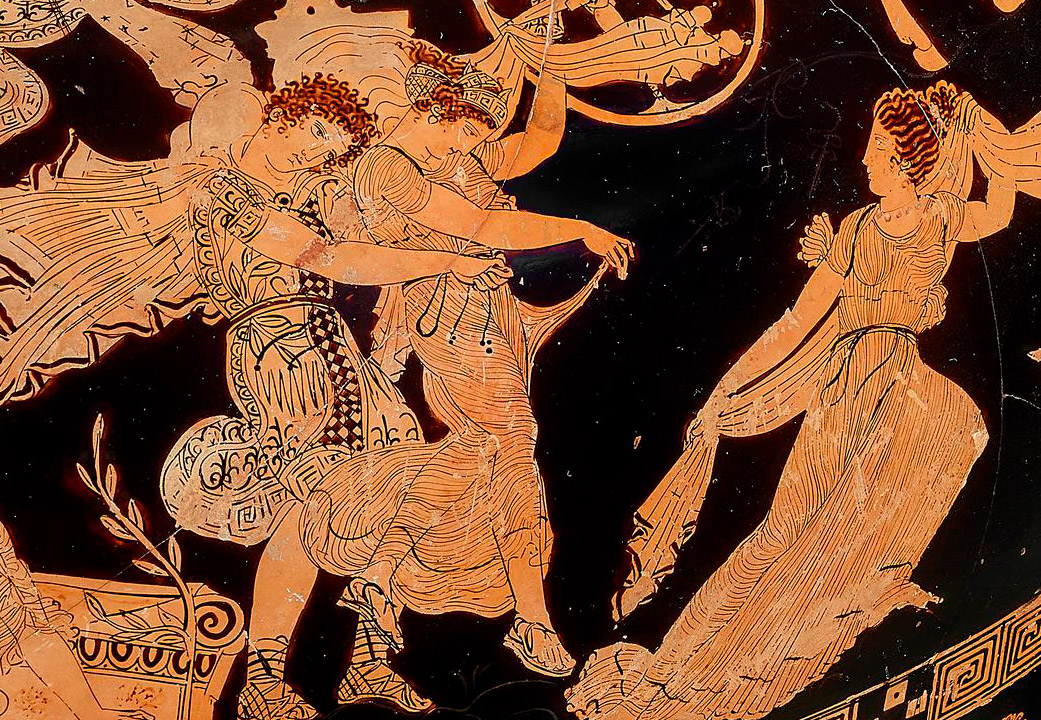
From Meidias to Gilliéron and Isadora Duncan
This hydria from the British Museum inspired Gilliéron when he wanted to show a dancing scene on a commemorative postcard produced for the 1906 Mesolympics. The choice of this graceful subject was perhaps related to the presence of the dancer Isadora Duncan in Athens during the preceding years. Pioneering a natural style of movement that freed the body from the constraints of classical ballet, this artist found a wellspring of inspiration in the art of antiquity. She was guided in her research by archaeologist Alexander Philadelpheus, himself a friend of Émile Gilliéron. He might even have had the opportunity to applaud the dancer at one of her private performances. In any event, the choice of this theme seems directly or indirectly inspired by Isadora’s choreographic art, the style of which also influenced the first Olympic ceremonies.
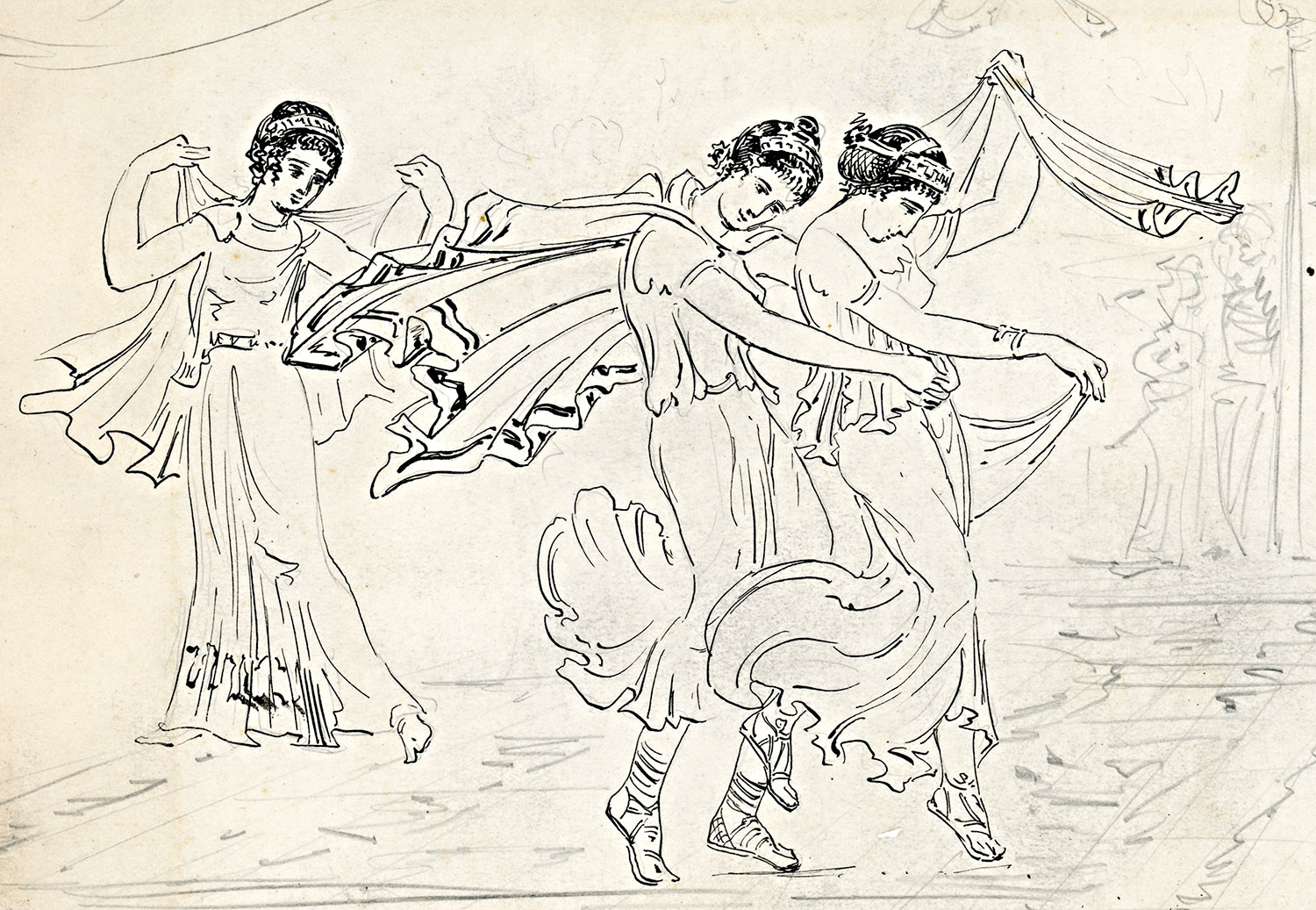
Female Athletes in Antiquity
The first modern Olympic Games relegated women to the background, and the ancient Games were equally unwelcoming – with the exception of quadriga (four-horse chariot) races, where rich owners could display their teams. However, Olympia did hold female games, the Heraia, where women could compete. The little figurine in a short tunic showing one of her breasts might be a Lacedaemonian participant in these games. She looks back in the characteristic position of the lead runner estimating the progress of her competitors. But uncertainty as to her provenance prevents us from saying more.
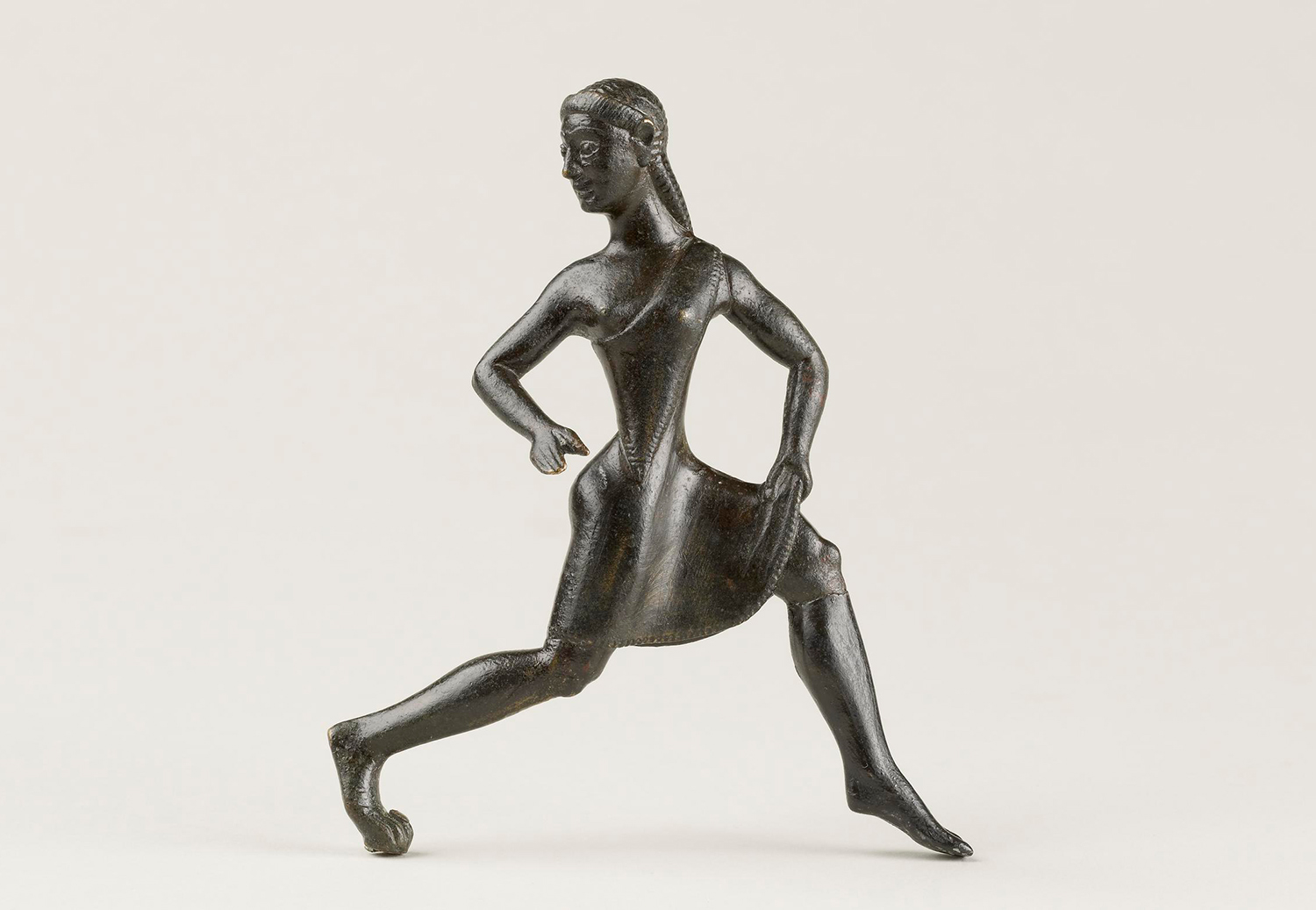
Sélection d'œuvres
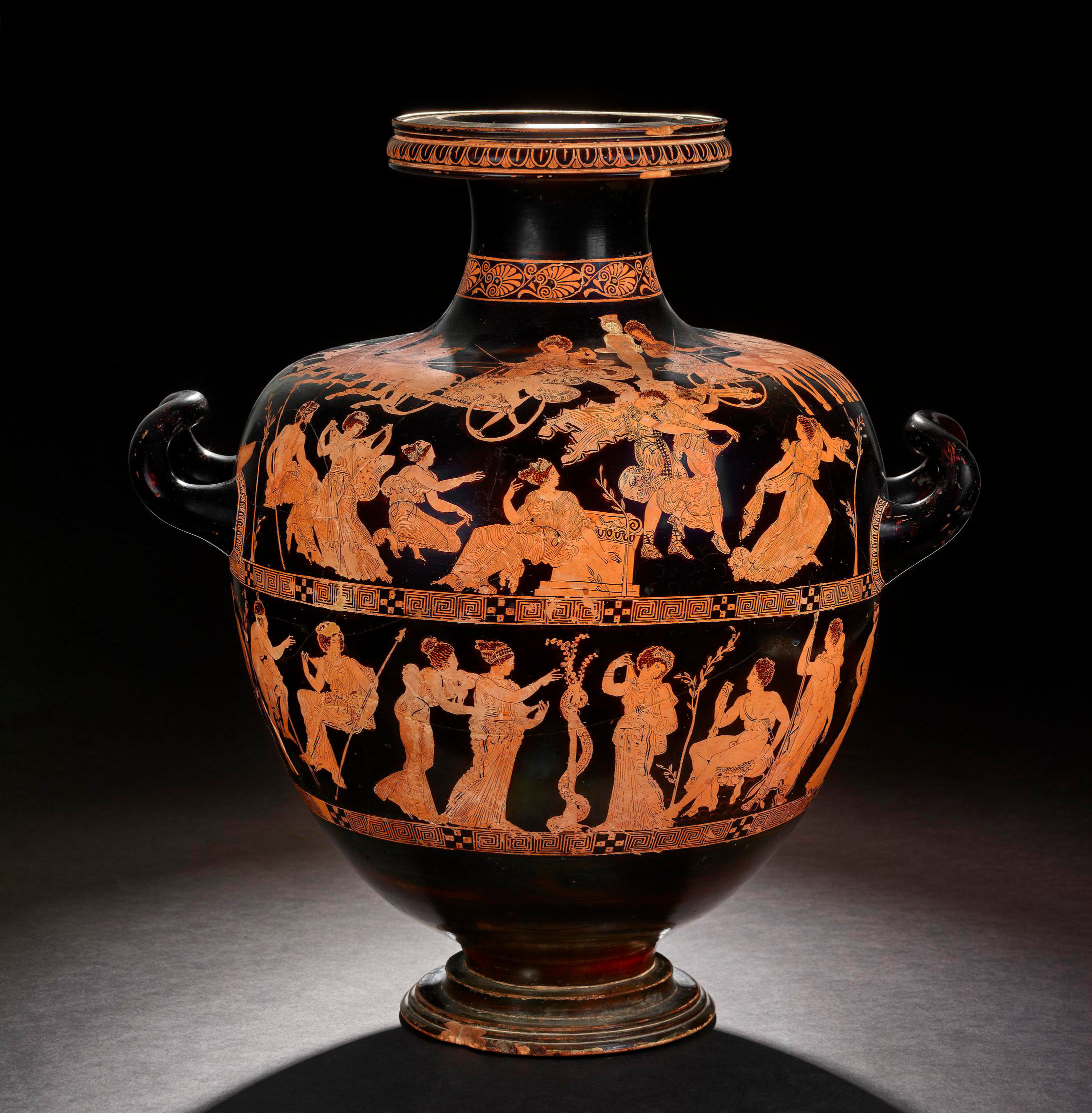
Signée par Meidias potier et attribuée au peintre de Meidias, Hydrie attique à figures rouges. 420-410 avant J.-C. Londres, The British Museum, inv. 1772,0320.30+ (Vase E224)
1 sur 7
